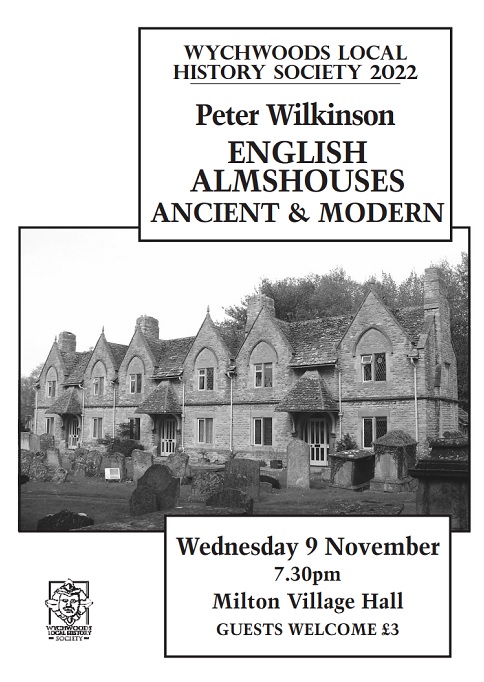
Members and guests gathered for our last talk of the year. This was a lively look at the history, philosophy and evolution of almshouses, as well as an informative description of the work of the Almshouse Association today.
Shipton resident Peter Wilkinson regaled us with a finely constructed talk, copiously illustrated with many examples of almshouse projects undertaken in various parts of the UK. Peter is a retired chartered buildings surveyor and is currently active as an Almshouse Association Panel Consultant. He brought a a wealth of detailed knowledge of his subject.
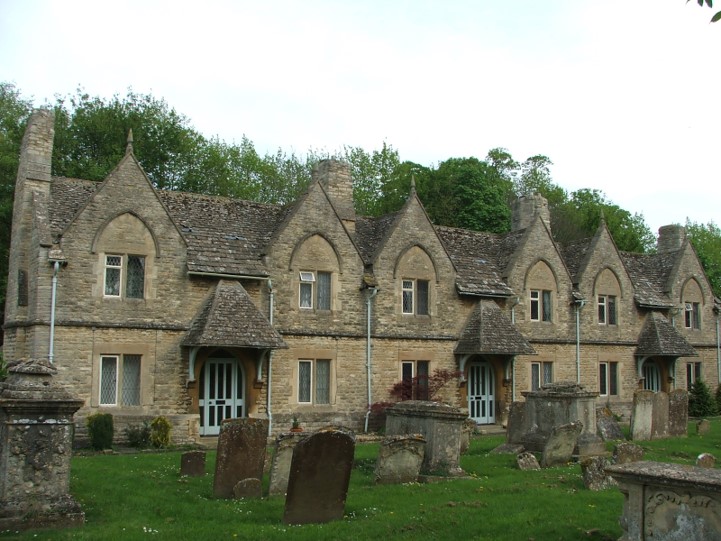
Many of us have the common perception of almshouses as a picturesque row of cottages, a reminder of a past age. As such they seem of little relevance in a modern welfare state – but we quickly learned of the scope involved, with 1,660 Almshouse Charities managing over 30.000 dwellings for upwards of 36,000 people – with buildings old and new.
Almshouses: Definition and History
Peter took us through the outline history of the founding and development of the almshouse phenomenon. It all started with the Synod of Aix in 816 A.D which gave monasteries the obligation to distribute alms. Usually in the form of food, clothing, medicine, sometimes money. But also, it could involve board and lodging – and it has been from this element that the almshouses come into being.
The Role of the Monasteries
Monks had always looked after their own sick or old brothers in an area known as the Farmery. The term “infirmary” is derived from this. In the 12th & 13th centuries hospitals within the monastery took over from the Farmery with their own Hall & Chapel. They catered for travellers and began to help poor and infirm lay people, giving alms as board and lodging.
But gradually the practice of ministering to lay people at the monastery hospital ceased and separate hospitals were built – for hospitality not medical provision – away from the monastery.
In the monasteries, alms were given out by the ‘Almoner’, the manorial official or monk appointed to collect and distribute them to the poor. Often the alms were dispensed from an almonry, a special room by the church. Gradually the custom of providing board and lodging for travellers developed, usually in the outer court of the monastery.
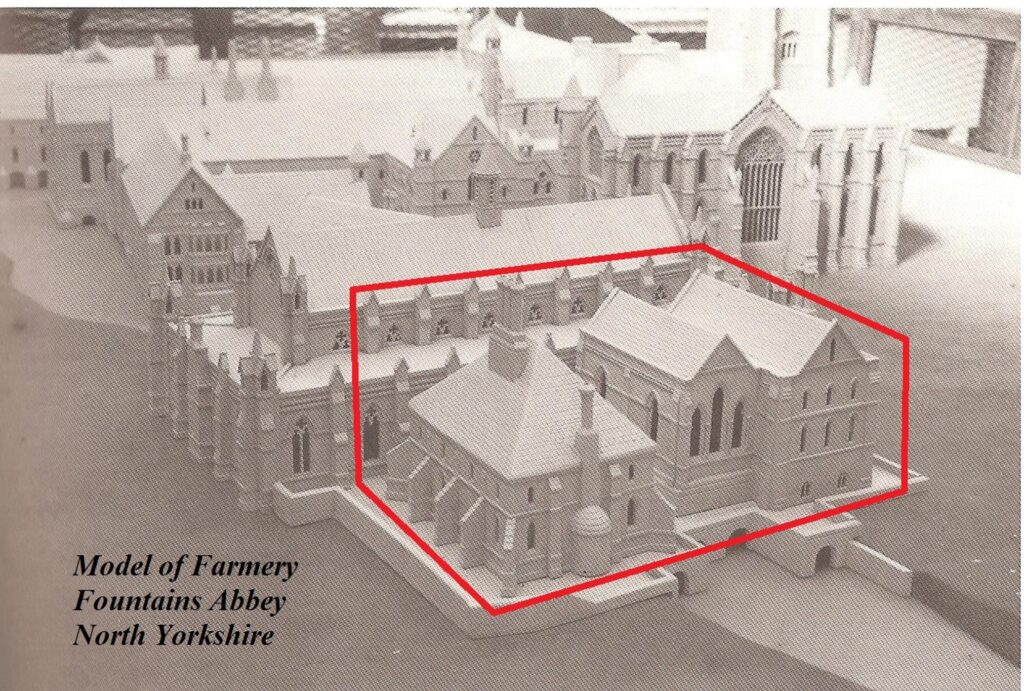
Peter’s talk took us through the various iterations of hospitality provision and into the concept of almshouses as we understand them today. He described how through history the monastic Farmery was extended in scope to become the mediaeval hospital for sick and later for elderly poor people.
That in time developed into what we now know as almshouses, moving away from the “hospital” concept and into the world of “hospitality”.
Almshouses Today
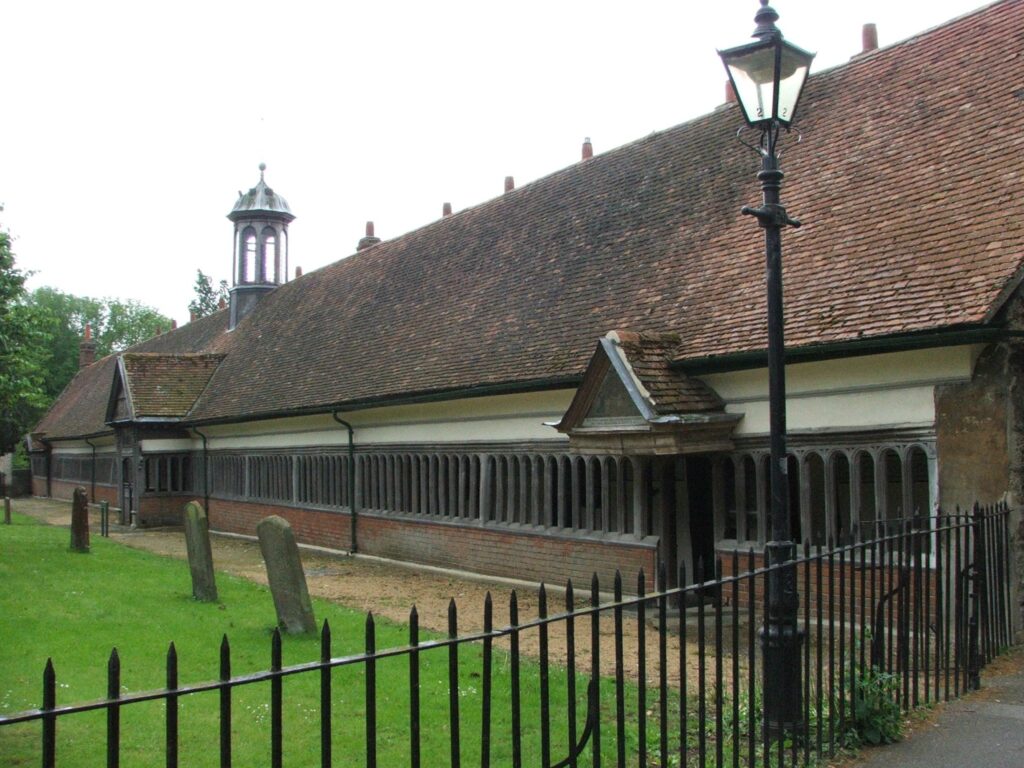
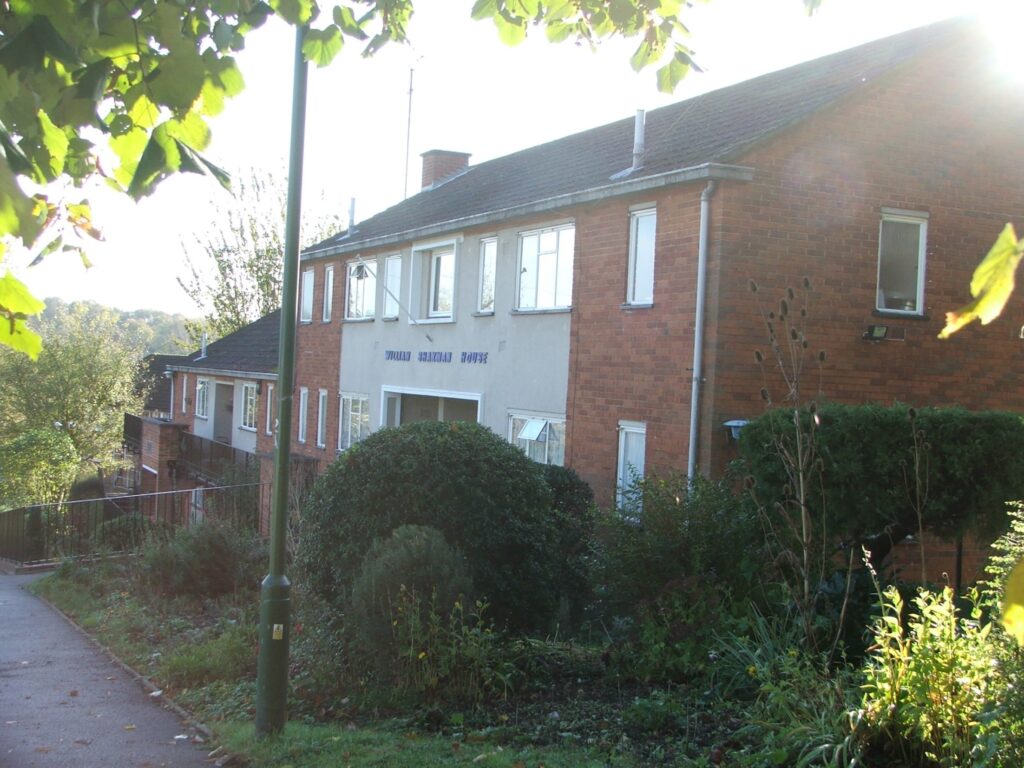
We learned that almshouses tend to be characterised by their charitable status and by the aim of supporting the continued independence of their residents. Peter took us through an extraordinary set of images, describing almshouse projects associated with the work of trustees – many of these involving very creative discussions with developers for new-build almshouses and refurbished older buildings.
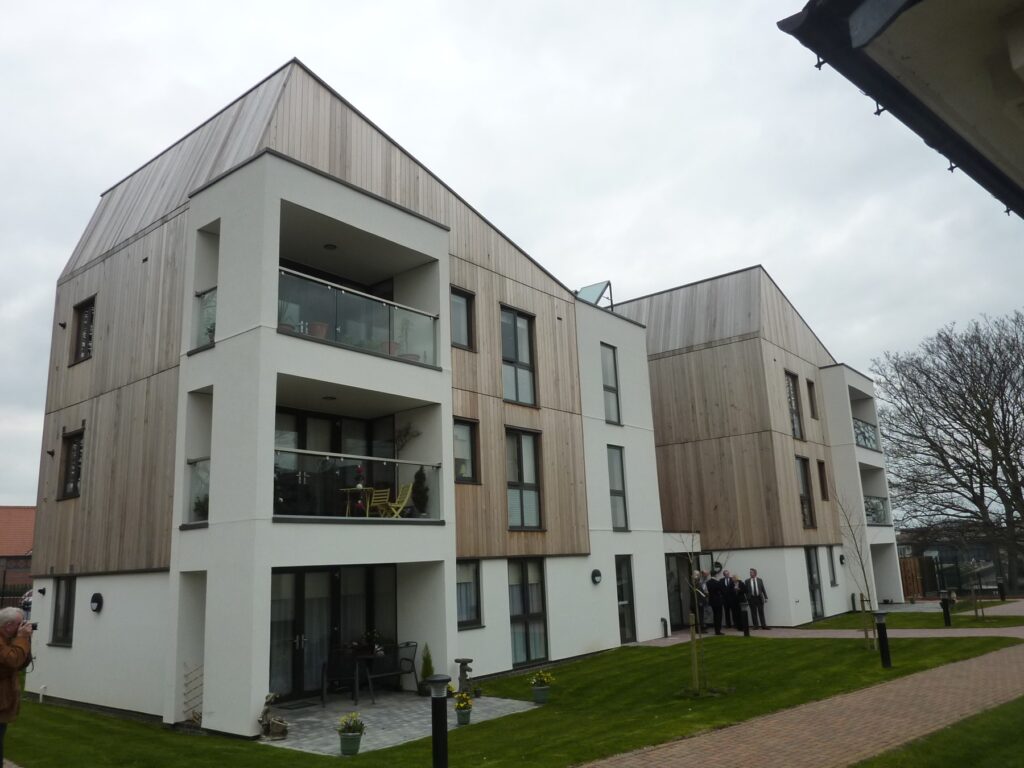
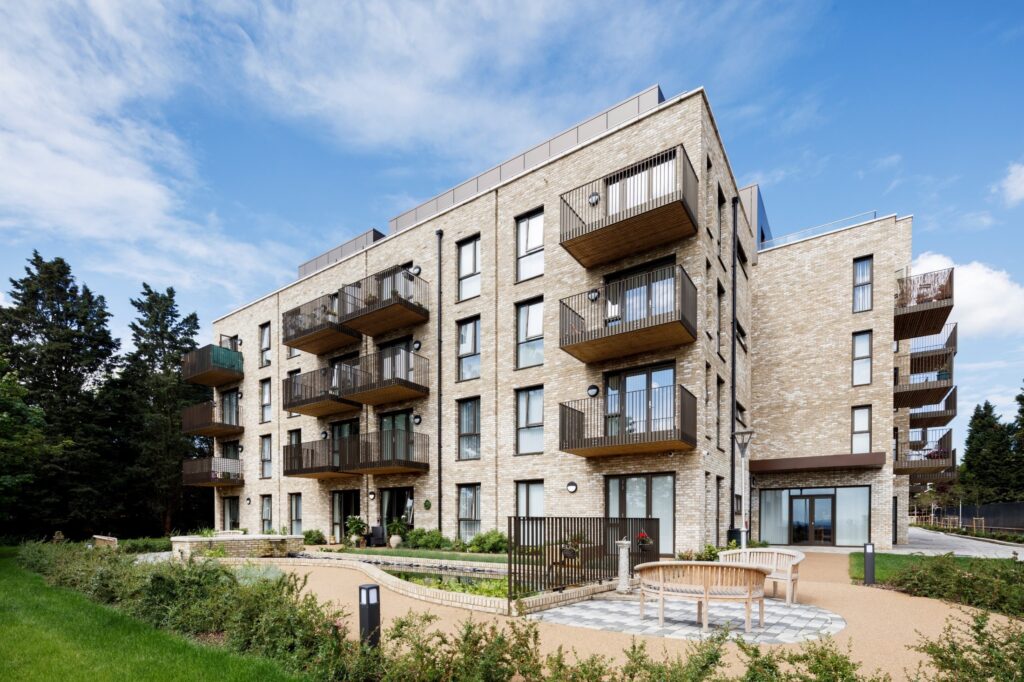
Crucially, and a surprise to many of us, there is an important distinction between almshouses and other forms of sheltered housing.
Almshouse residents have no security of tenure, being solely dependent upon the goodwill of the 3 administering trustees. Thus, occupants are always referred to as residents, never as tenants. No rent is paid, but rather a weekly maintenance contribution which is like rent but different in law, and perhaps 60-70% of commercial rates.
Most almshouse residents today will be of retirement age, of limited financial means but we also learned that, these days, young families qualify for almshouse residences.
The Almshouse Association: Guiding Principles
The Almshouse Association assists charities to build, modernise and update almshouse dwellings. These projects provide 21st century living in many properties across the UK, and Peter outlined the challenges faced, especially where properties have listed status or where – as is often the case – funds are limited or lacking.
The Almshouse Association ensures that residents have dignity, freedom and independence to live their lives as they see fit within a safe and secure environment. Almshouses are considered homes for life – care packages provided by social services when residents need additional help.
Over 400 wardens or scheme managers are employed by the larger almshouse charities. Some of larger charities offer extra care and even residential care. But the general position is that almshouse residents should be capable of independent living for the rest of their lives.
The society is grateful to Peter for his time and expertise, and indeed for the provision of images and texts to help with this short overview of an enjoyable evening for all.

